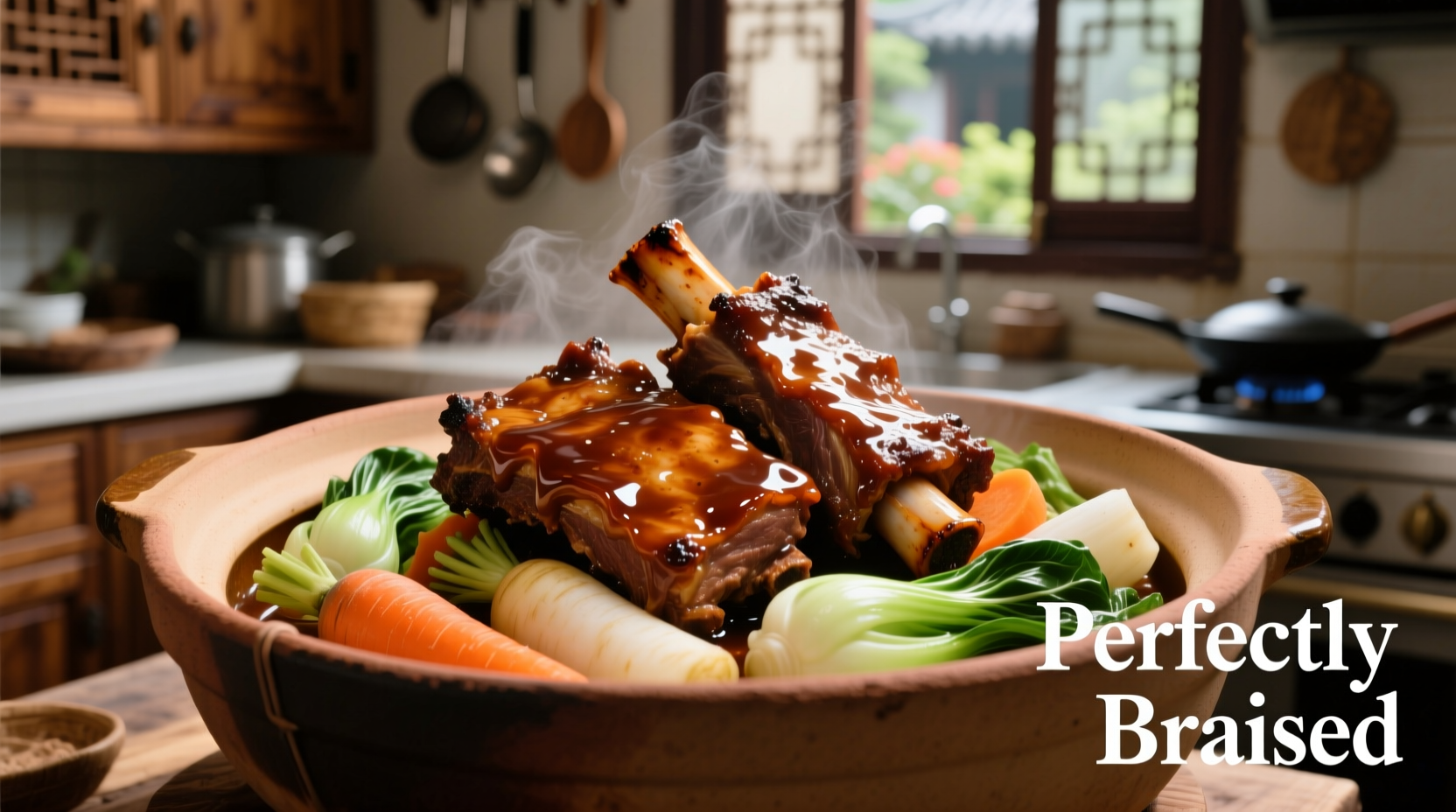The best way to cook short ribs is through slow braising at 275-325°F (135-163°C) for 2.5-3.5 hours until fork-tender. Start by searing bone-in short ribs to develop flavor, then braise in a flavorful liquid like beef broth with aromatics. This method breaks down collagen into gelatin, creating that signature fall-off-the-bone texture while keeping the meat incredibly moist and flavorful.
Nothing compares to perfectly cooked short ribs—their rich, beefy flavor and melt-in-your-mouth texture make them a showstopper dish. Whether you're planning a special dinner or want to master a new cooking technique, this guide delivers everything you need to achieve restaurant-quality short ribs at home. Forget dry, tough results; we'll walk through the science-backed methods that guarantee tender, flavorful short ribs every time.
Understanding Short Ribs: Types and Selection
Short ribs come in several cuts, each suited for different cooking approaches. The most common varieties you'll find at butcher counters include:
- English-cut: Individual ribs sliced across the bone (about 3 inches long)
- Flanken-cut: Thin strips cut across multiple ribs (popular for Korean BBQ)
- Boneless short ribs: Meat removed from bones (less ideal for slow cooking)
- Plate short ribs: The most meaty and marbled cut, perfect for braising
When selecting short ribs, look for abundant marbling (white fat streaks throughout the meat), deep red color, and bones that fill most of the width. USDA Prime grade offers the best marbling, but Choice grade works well too. Avoid cuts with excessive external fat or grayish meat, which indicates age.
Essential Preparation Techniques
Proper preparation makes the difference between good and exceptional short ribs:
- Trim excess fat: Remove large fat deposits but leave some for flavor
- Dry brine (optional): Salt 12-24 hours before cooking for deeper seasoning
- Pat dry thoroughly: Critical for achieving a proper sear
- Season generously: Use coarse salt and freshly ground pepper
Searing properly is non-negotiable—this Maillard reaction creates complex flavor compounds that simmering alone cannot achieve. Heat your Dutch oven until a drop of water sizzles violently, then sear each side for 3-4 minutes until deeply browned. Don't overcrowd the pot; work in batches if necessary.

The Foolproof Braising Method
Braising transforms tough connective tissue into succulent, tender meat through controlled heat and moisture. Here's the professional approach:
- After searing, remove short ribs and sauté aromatics (onions, carrots, celery) for 5 minutes
- Add 2-3 minced garlic cloves and cook for 1 minute until fragrant
- Deglaze with 1 cup red wine, scraping up browned bits
- Pour in enough beef broth to come halfway up the ribs
- Add flavor enhancers: 2 bay leaves, 4 sprigs thyme, 1 tbsp tomato paste
- Return short ribs to pot, meat-side up, ensuring liquid reaches halfway up ribs
- Cover tightly and cook at 275°F (135°C) for 2.5-3.5 hours
The ribs are done when a fork slides in with no resistance and the meat begins to pull away from the bone. Internal temperature should reach 200-205°F (93-96°C) for optimal tenderness—this is when collagen fully converts to gelatin.
| Cooking Method | Time Required | Temperature | Texture Result | Best For |
|---|---|---|---|---|
| Oven Braising | 2.5-3.5 hours | 275-300°F | Fall-off-the-bone | Special occasions |
| Slow Cooker | 7-8 hours | Low setting | Very tender | Hands-off cooking |
| Instant Pot | 60-75 minutes | High pressure | Firm but tender | Time-constrained |
| Grilling | 2-3 hours | 225-250°F | Chewy with bark | BBQ enthusiasts |
Common Short Rib Problems and Solutions
Even experienced cooks encounter issues with short ribs. Here's how to troubleshoot:
- Dry meat: Usually from insufficient cooking time or temperature too high. Solution: Return to braise for additional 30-60 minutes
- Meat falling off bone too easily: Overcooking. Solution: Reduce time by 30 minutes next time
- Bland flavor: Not enough seasoning or aromatics. Solution: Add 1 tsp soy sauce or Worcestershire to braising liquid
- Excess fat: Chill finished dish and skim solidified fat from surface before reheating
- Sauce too thin: Simmer uncovered for 15-20 minutes to reduce, or create a slurry with 1 tbsp cornstarch and 2 tbsp cold water
Serving and Storage Tips
For the best dining experience, follow these professional recommendations:
- Rest short ribs in their cooking liquid overnight—the flavors deepen significantly
- Serve over creamy polenta, mashed potatoes, or buttered egg noodles
- Garnish with fresh parsley and a sprinkle of flaky sea salt
- Reduce the braising liquid by half for an elegant, concentrated sauce
- Store in airtight container for up to 4 days or freeze for 3 months
Reheating properly maintains texture—place short ribs in a covered dish with some braising liquid and warm at 300°F (150°C) for 20-30 minutes. Avoid microwaving, which creates uneven heating and rubbery texture.
Advanced Flavor Variations
Once you've mastered the basic technique, experiment with these globally inspired variations:
- Korean-style: Use a marinade of soy sauce, sesame oil, ginger, garlic, and pear puree
- Argentinian chimichurri: Braise with oregano and red pepper flakes, serve with fresh chimichurri
- Chinese red-braised: Cook in soy sauce, Shaoxing wine, rock sugar, and star anise
- Mexican mole: Finish with a rich mole sauce made from chocolate and multiple chilies
Remember that flavor development follows a clear timeline: searing creates initial complexity, aromatics build the flavor base, braising liquid adds depth, and resting time allows flavors to fully integrate. The USDA Food Safety and Inspection Service confirms that cooking beef to 145°F with a 3-minute rest is safe, but for tough cuts like short ribs, the higher 200°F+ temperature required for tenderness is both safe and necessary (USDA FSIS).











 浙公网安备
33010002000092号
浙公网安备
33010002000092号 浙B2-20120091-4
浙B2-20120091-4